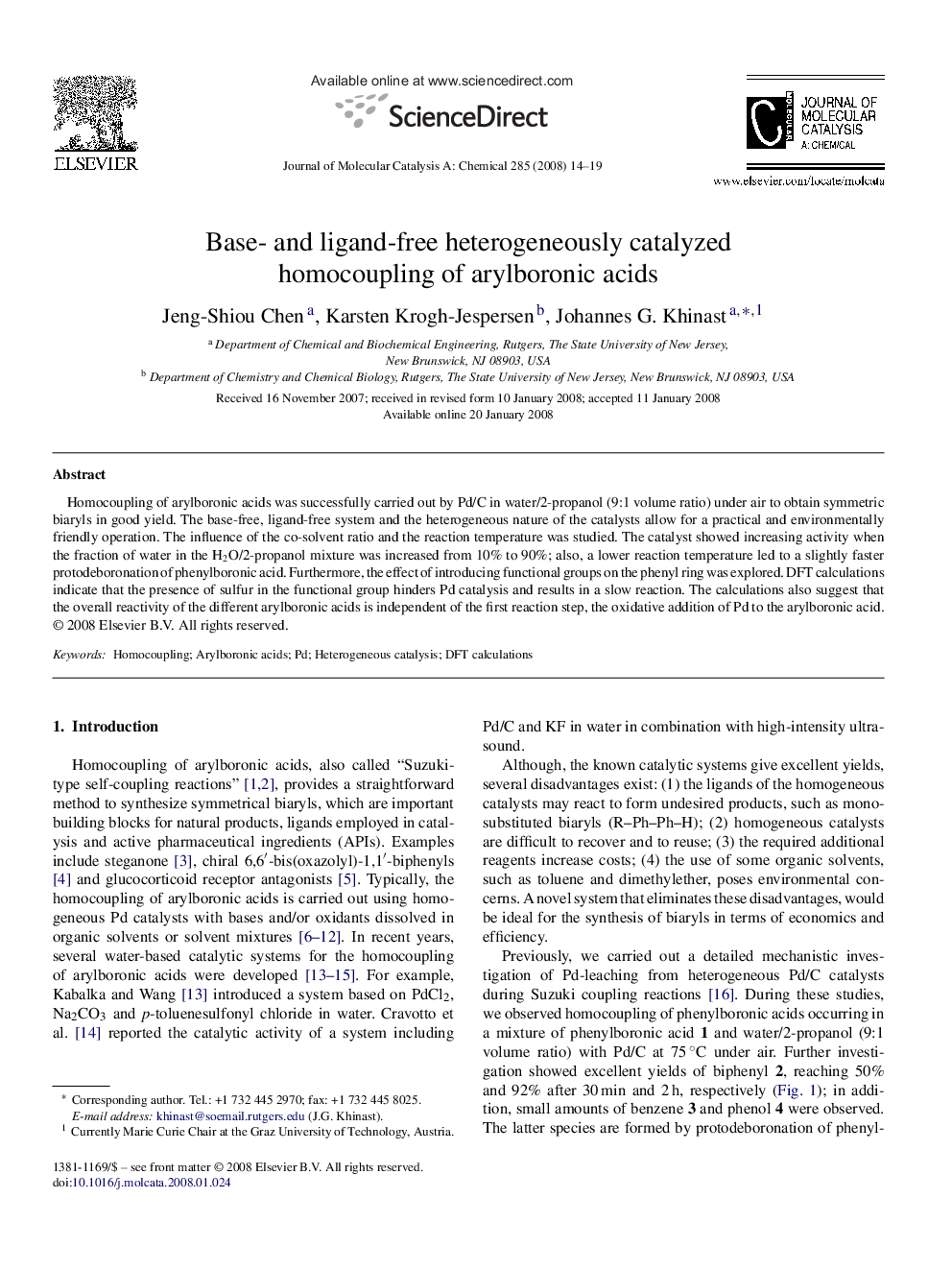| Article ID | Journal | Published Year | Pages | File Type |
|---|---|---|---|---|
| 68295 | Journal of Molecular Catalysis A: Chemical | 2008 | 6 Pages |
Homocoupling of arylboronic acids was successfully carried out by Pd/C in water/2-propanol (9:1 volume ratio) under air to obtain symmetric biaryls in good yield. The base-free, ligand-free system and the heterogeneous nature of the catalysts allow for a practical and environmentally friendly operation. The influence of the co-solvent ratio and the reaction temperature was studied. The catalyst showed increasing activity when the fraction of water in the H2O/2-propanol mixture was increased from 10% to 90%; also, a lower reaction temperature led to a slightly faster protodeboronation of phenylboronic acid. Furthermore, the effect of introducing functional groups on the phenyl ring was explored. DFT calculations indicate that the presence of sulfur in the functional group hinders Pd catalysis and results in a slow reaction. The calculations also suggest that the overall reactivity of the different arylboronic acids is independent of the first reaction step, the oxidative addition of Pd to the arylboronic acid.
Graphical abstractHomocoupling of arylboronic acids was successfully carried out by Pd/C in water/2-propanol (9:1 volume ratio) under air to obtain symmetric biaryls in good yield. DFT calculations indicate that the presence of sulfur in the functional group hinders Pd catalysis and results in a slow reaction. The calculations also suggest that the overall reactivity of substituted arylboronic acids is independent of the first reaction step, the oxidative addition of Pd to the arylboronic acid.Figure optionsDownload full-size imageDownload as PowerPoint slide
